Gautier Capucon, ‘cello, and Jean-Yves Thibaudet, piano, presented a duo recital, December 2, 2018, at Davies Symphony Hall, which was in every way great. Each is technically above brilliant. Their musicality opens new experiences of being in the music. The program selections were outstanding, presenting sonatas that reflected the composers’ greatness and differing characters.
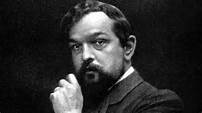 Claude Debussy (1862-1918) Claude Debussy’s Sonata No. 1 in D minor (1915) was an eye-opening visit to Debussy’s imagination and boundless invention. Known as an “Impressionist” composer, a title which gives a false, gauzy idea of his music, this sonata was altogether more modern sounding than most “new” music of our current time. It demanded a wide range of technical mastery from the ‘cellist: vibratos, pizzicato, glissando. Watching the music being made grabbed the attention as much as listening. The pianist also changes technique and mood incredibly quickly. There is no point to guessing what comes next. Debussy changes the colors and the tonal direction of his music. The exhilarating final movement leaves the audience gasping for breath from this rapidly turning dance and also in amazement at the virtuoso music making.
Claude Debussy (1862-1918) Claude Debussy’s Sonata No. 1 in D minor (1915) was an eye-opening visit to Debussy’s imagination and boundless invention. Known as an “Impressionist” composer, a title which gives a false, gauzy idea of his music, this sonata was altogether more modern sounding than most “new” music of our current time. It demanded a wide range of technical mastery from the ‘cellist: vibratos, pizzicato, glissando. Watching the music being made grabbed the attention as much as listening. The pianist also changes technique and mood incredibly quickly. There is no point to guessing what comes next. Debussy changes the colors and the tonal direction of his music. The exhilarating final movement leaves the audience gasping for breath from this rapidly turning dance and also in amazement at the virtuoso music making.
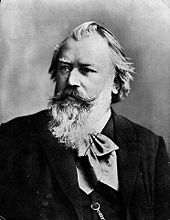 Johannes Brahms(1833-1897) Brahms’ Sonata No. 1 in E minor for Cello and Piano, Opus 38 (1865) is a grand, musical landmark of music for the two instruments. It is fascinating in its combination of play with musical forms and the sense that an overarching meaning arises from what is built out of sound puzzles and structures. Brahms explores how many variations he can make with a five note phrase. In Brahmsian fashion, the music is sweeping, broad, embracing while it is, underneath it all, built so neatly. The second movement, Allegretto quasi menuetto, goes beyond its minuet inspiration. Brahms’ delightful dance opens up the view from the Sonata. Now it overlooks a vast, sunlit garden. It is a lighter and brighter dance than humans in Eighteenth Century clothing could jump into; Thibaudet and Capucon took over as though the music had been written for them. The final Allegro continues to explore the fugues of the first. It is powerful, all encompassing music. Yes, here we are with Brahms. The immense energy and technical power of the performers was astonishing.
Johannes Brahms(1833-1897) Brahms’ Sonata No. 1 in E minor for Cello and Piano, Opus 38 (1865) is a grand, musical landmark of music for the two instruments. It is fascinating in its combination of play with musical forms and the sense that an overarching meaning arises from what is built out of sound puzzles and structures. Brahms explores how many variations he can make with a five note phrase. In Brahmsian fashion, the music is sweeping, broad, embracing while it is, underneath it all, built so neatly. The second movement, Allegretto quasi menuetto, goes beyond its minuet inspiration. Brahms’ delightful dance opens up the view from the Sonata. Now it overlooks a vast, sunlit garden. It is a lighter and brighter dance than humans in Eighteenth Century clothing could jump into; Thibaudet and Capucon took over as though the music had been written for them. The final Allegro continues to explore the fugues of the first. It is powerful, all encompassing music. Yes, here we are with Brahms. The immense energy and technical power of the performers was astonishing.
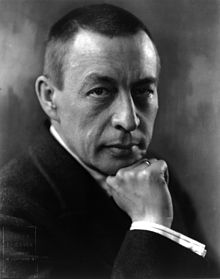 Sergei Rachmaninoff (1873-1943)
Sergei Rachmaninoff (1873-1943)
Rachmaninoff’s Sonata in G minor for Cello and Piano, Opus 19, is gloriously melodic, far reaching, and generally just gorgeous. It has drama, sadness, charm. The interplay between the ‘cello and piano is balanced as one instrument flies on lyrical wings and the other travels into distant lands created by diversity of sounds. Capucon and Thibaudet shared the world of this music with obvious respect and generosity. There is something about love and something about elegance revealed in the journey from the first movement, Lento-Allegro moderato-Moderato to the closing celebration of Allegro mosso–Moderato–Vivace. The audience did not stand, it levitated on Rachmaninoff’s music.
The artists responded to the cheering audience with three encores (“Oh, look, they’re coming back!”) Again, the musical choices were not only brilliantly performed, they also created a mini-program of stunning music and emotions. First was Rachmaninoff’s “Vocalise,” Opus 34, no.14; then, Shostakovich’s Scherzo (3rd movement) from Cello Sonata in D minor, opus 40. The artists sent us all home with Saint-Saens, The Swan, from The Carnival of the Animals. Exquisite.
Look for Mr. Thibaudet in San Francisco, April, 2019, on a program with famed violinist Midori. He and Mr. Capucon continue their partnership in concerts in Australia, Antwerp, and France. Each will perform around the US with symphonies from coast to coast. Don’t miss them.
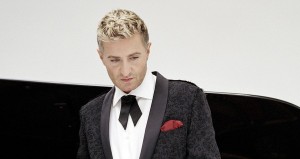 Jean-Ives Thibaudet
Jean-Ives Thibaudet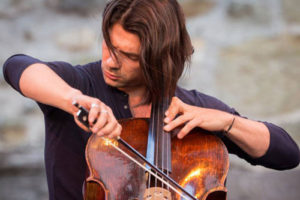
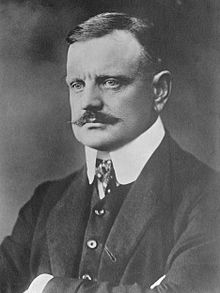
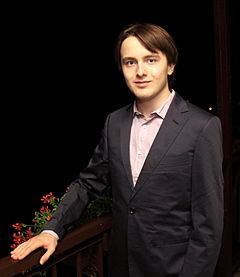 Daniil Trifonov (photo by JKruk)
Daniil Trifonov (photo by JKruk)